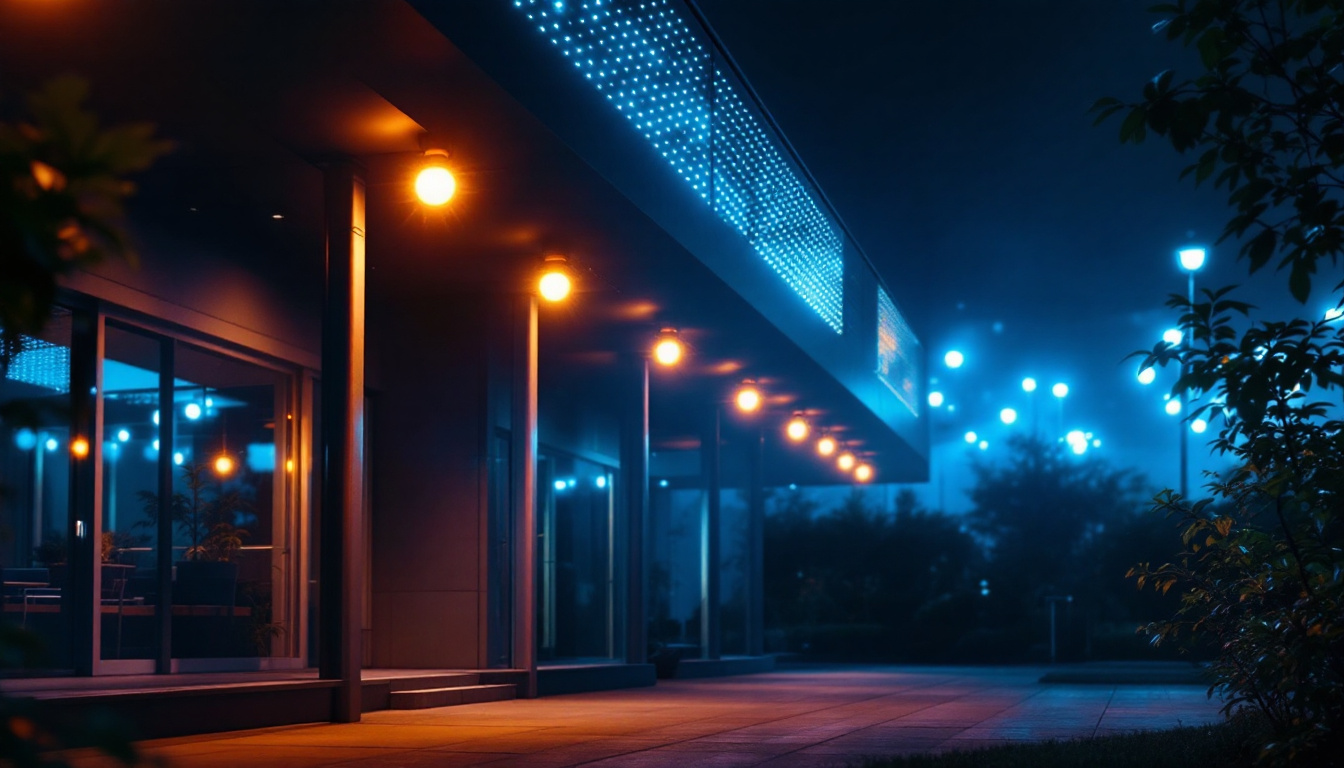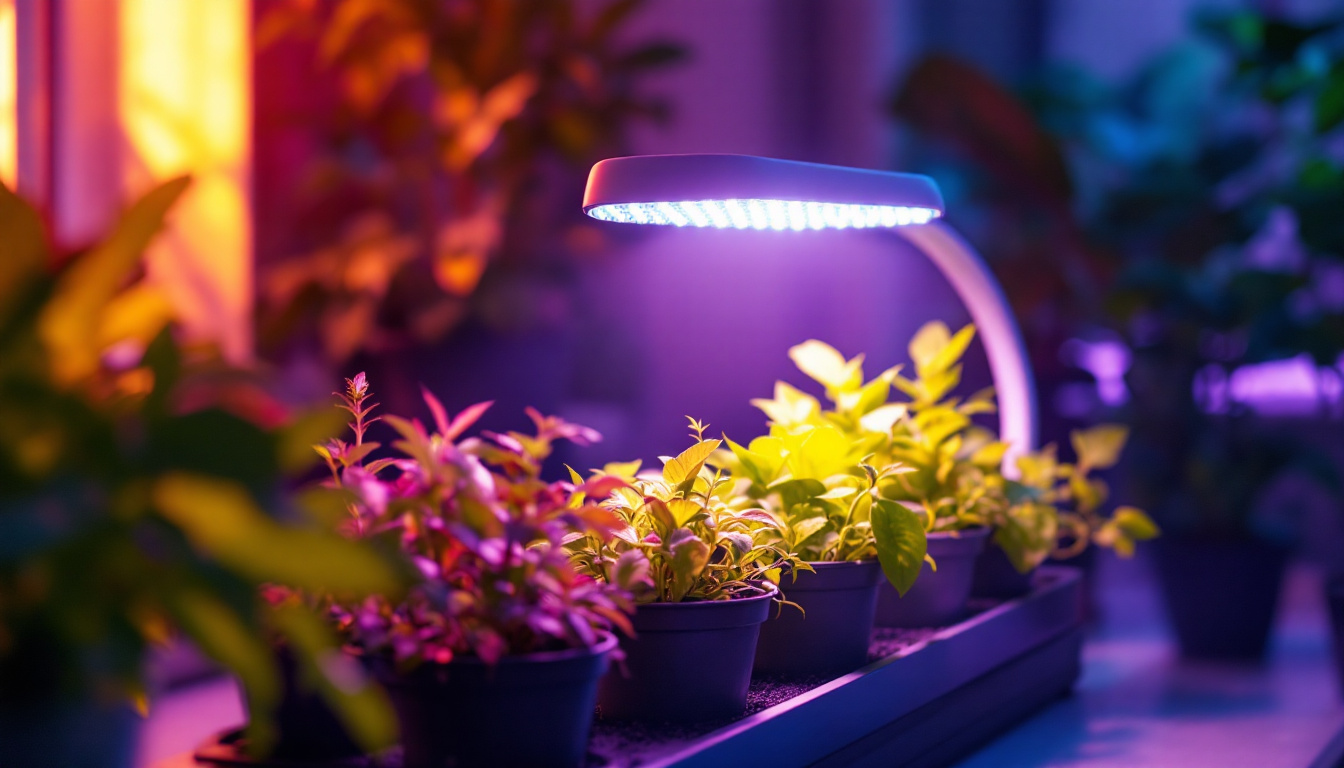
Ceramic Metal Halide (CMH) lamps, also known as Ceramic Discharge Metal Halide (CDM) lamps, have become a staple in the lighting industry, particularly for commercial, retail, and horticultural applications. For lighting contractors, understanding the fundamental characteristics of CMH lamps is essential to specifying, installing, and maintaining these fixtures effectively.
At their core, CMH lamps are a type of high-intensity discharge (HID) lamp that use a ceramic arc tube instead of the traditional quartz. This ceramic construction allows for higher operating temperatures, which translates into improved color rendering and longer lamp life compared to older metal halide technologies. The ceramic arc tube also enables a more stable light output and better lumen maintenance over time.
For contractors, it’s important to note that CMH lamps are available in various wattages, typically ranging from 20 watts to 1000 watts, making them versatile for a wide range of lighting needs. Their spectral output is often praised for its natural, crisp white light with excellent color rendering indexes (CRI) often above 90, which is crucial for environments where color accuracy is paramount, such as retail spaces and art galleries.
One of the primary benefits of CMH lamps is their energy efficiency. Compared to traditional metal halide lamps, CMH lamps deliver more lumens per watt, meaning they provide brighter light for less energy consumption. This efficiency can lead to significant cost savings on energy bills over the lifespan of the fixture.
Another advantage is the longevity of CMH lamps. They typically last between 12,000 to 24,000 hours, depending on the wattage and operating conditions. This extended lifespan reduces maintenance frequency and labor costs, a critical consideration for contractors managing large installations or difficult-to-access fixtures.
Additionally, CMH lamps exhibit superior color stability throughout their life. Unlike some HID lamps that shift in color temperature as they age, CMH lamps maintain consistent light quality, ensuring that spaces remain visually appealing and functional without frequent lamp replacements or color corrections.
Moreover, CMH lamps are also known for their ability to support plant growth in horticultural settings. The full-spectrum light they emit closely mimics natural sunlight, making them ideal for indoor gardening and greenhouse applications. This characteristic not only enhances photosynthesis but also promotes healthier plant growth, which is a significant advantage for contractors working in the agricultural sector.
Furthermore, the compact size of CMH lamps allows for more flexible fixture designs. This adaptability means that contractors can create innovative lighting solutions that meet specific aesthetic and functional requirements. Whether it’s for a sleek retail display or an intricate architectural feature, the design possibilities with CMH technology are extensive, enabling contractors to push the boundaries of conventional lighting design.
Lighting contractors encounter CMH lamps in a variety of settings, each with unique requirements. Understanding where CMH technology excels can help contractors make informed recommendations and deliver optimal lighting solutions to clients.
Retail environments benefit immensely from CMH lamps due to their high CRI and natural light appearance. Products under CMH lighting appear more vibrant and true to color, enhancing the shopping experience and potentially increasing sales. Lighting contractors should consider CMH lamps when designing lighting systems for clothing stores, jewelry shops, and supermarkets where product presentation is critical.
Moreover, CMH lamps’ energy efficiency aligns well with commercial clients’ sustainability goals. Many businesses seek to reduce their carbon footprint and energy expenses, making CMH a compelling choice over older HID or incandescent options.
In the horticultural sector, CMH lamps have gained popularity for their broad-spectrum light output, which closely mimics natural sunlight. This spectrum supports healthy plant growth, flowering, and fruiting cycles, making CMH lamps a preferred option for indoor growers and greenhouses.
Lighting contractors working with agricultural clients should emphasize the benefits of CMH lamps in promoting photosynthesis and plant development. Additionally, the lower heat output compared to traditional HID lamps reduces the risk of plant stress and allows for closer fixture placement, optimizing space and light distribution.
CMH lamps are also well-suited for architectural lighting applications, including façade illumination and landscape lighting. Their crisp white light enhances the aesthetic appeal of buildings and outdoor spaces while providing sufficient brightness for safety and security.
Contractors should be aware that CMH lamps perform well in outdoor fixtures designed to protect against environmental factors. Their stable light output and long life reduce maintenance needs in hard-to-reach installations such as streetlights, parking lots, and stadium lighting.
Proper installation is critical to maximizing the performance and lifespan of CMH lamps. Lighting contractors must adhere to specific guidelines and standards to ensure safety, efficiency, and client satisfaction.
CMH lamps require compatible fixtures and electronic ballasts designed specifically for ceramic arc tubes. Using incompatible ballasts can lead to premature lamp failure, flickering, or unsafe operating conditions. Contractors should verify fixture specifications and ballast ratings before installation.
Electronic ballasts for CMH lamps typically offer instant start and flicker-free operation, which enhances user experience and reduces wear on the lamp. Ensuring that ballasts are properly matched to lamp wattage and type is essential for optimal performance.
Due to the high operating temperatures of CMH lamps, contractors must handle these lamps with care during installation. Avoid touching the ceramic arc tube with bare hands, as oils and contaminants can cause hot spots and reduce lamp life. Using gloves or a clean cloth is recommended.
Additionally, CMH lamps require a warm-up period to reach full brightness and color stability. Contractors should inform clients about this characteristic to manage expectations and avoid unnecessary troubleshooting calls.
CMH lamps generate heat, though less than traditional metal halide lamps, so adequate ventilation within fixtures and installation environments is necessary. Proper airflow prevents overheating, which can degrade lamp components and ballast performance.
Contractors should also consider ambient temperature ranges specified by manufacturers to ensure the lamps operate within safe limits. Extreme cold or heat can affect lamp ignition and longevity.
Effective maintenance practices extend the life of CMH lamps and maintain lighting quality. Lighting contractors often provide ongoing support and should be well-versed in common issues and their resolutions.
Regular inspection of CMH fixtures is important to identify signs of wear, discoloration, or damage. Cleaning the lamp and fixture lenses removes dust and debris that can reduce light output and cause overheating.
Contractors should schedule maintenance visits based on the environment and usage patterns. For example, dusty or humid locations may require more frequent cleaning to maintain optimal performance.
Flickering or failure to start are common issues with CMH lamps and often relate to ballast problems or improper installation. Replacing faulty ballasts or verifying wiring connections typically resolves these problems.
Color shifts or dimming over time can indicate lamp aging. While CMH lamps maintain color stability better than other HID lamps, eventual replacement is necessary to preserve lighting quality. Contractors should educate clients on expected lamp life and replacement schedules.
CMH lamps contain small amounts of mercury and should be disposed of following local regulations for hazardous waste. Lighting contractors have a responsibility to educate clients on proper disposal methods and may offer lamp recycling services.
Adopting environmentally responsible practices not only complies with regulations but also enhances the contractor’s reputation and aligns with growing sustainability trends in the lighting industry.
While LED technology continues to grow in popularity, CMH lamps maintain a strong position in specific applications due to their unique spectral qualities and efficiency. Lighting contractors should stay informed about ongoing innovations to provide the best solutions to clients.
Manufacturers are continually refining ceramic arc tubes to improve durability, color rendering, and energy efficiency. New materials and coatings enhance lamp performance and reduce degradation, extending lamp life even further.
These advancements enable CMH lamps to compete effectively with emerging lighting technologies, particularly in applications where light quality is non-negotiable.
CMH lamps are increasingly being integrated into smart lighting controls, allowing for dimming, scheduling, and energy monitoring. Lighting contractors should familiarize themselves with compatible control systems to offer clients modern, flexible lighting solutions.
Smart controls can optimize energy use and extend lamp life by reducing operating hours and adjusting light levels based on occupancy or daylight availability.
Some lighting designs combine CMH lamps with LEDs or other light sources to leverage the strengths of each technology. For example, CMH lamps can provide high-quality ambient lighting, while LEDs offer accent or task lighting with dynamic control.
Contractors skilled in hybrid system design can deliver customized solutions that maximize performance, aesthetics, and energy savings.
For lighting contractors, mastering the intricacies of CMH lamps is a valuable asset. These lamps offer a compelling combination of energy efficiency, excellent color rendering, and long life that meets the demands of diverse applications from retail to horticulture.
By understanding the technical specifications, installation requirements, maintenance practices, and emerging trends related to CMH lamps, contractors can confidently specify and install lighting systems that satisfy client expectations and regulatory standards.
Staying current with innovations and integrating CMH technology with smart controls and hybrid systems will ensure that contractors remain competitive and capable of delivering cutting-edge lighting solutions in a rapidly evolving industry.
Ready to elevate your lighting projects with the efficiency and brilliance of CMH lamps? Look no further than LumenWholesale for all your lighting needs. Our selection of high-quality, spec-grade CMH lamps is available at unbeatable wholesale prices, ensuring you get the best value for your investment. Say goodbye to inflated markups and hello to hassle-free bulk buying with free shipping. Don’t compromise on quality or price. Visit LumenWholesale today and experience the perfect blend of quality, affordability, and convenience for contractors who demand excellence.

Discover how 100 feet LED lights revolutionize safety in lighting installations.

Discover the transformative benefits of light cleaning for lighting contractors.

Discover the must-have tools that every lighting contractor needs to succeed.

Discover the top strategies lighting contractors use with Hydrofarm grow lights to optimize plant growth and energy efficiency.